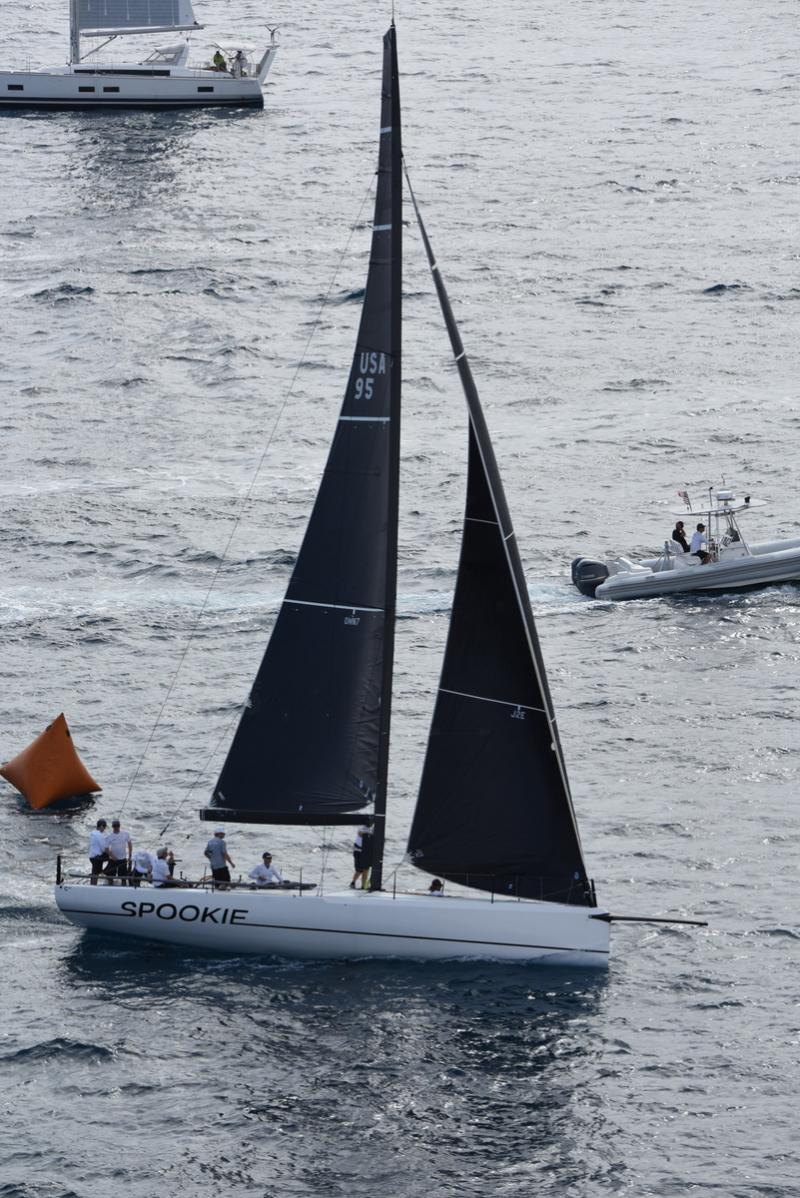Interstate Sailing Incorporated
Polar Tool
EXPEDITION POLAR TOOL
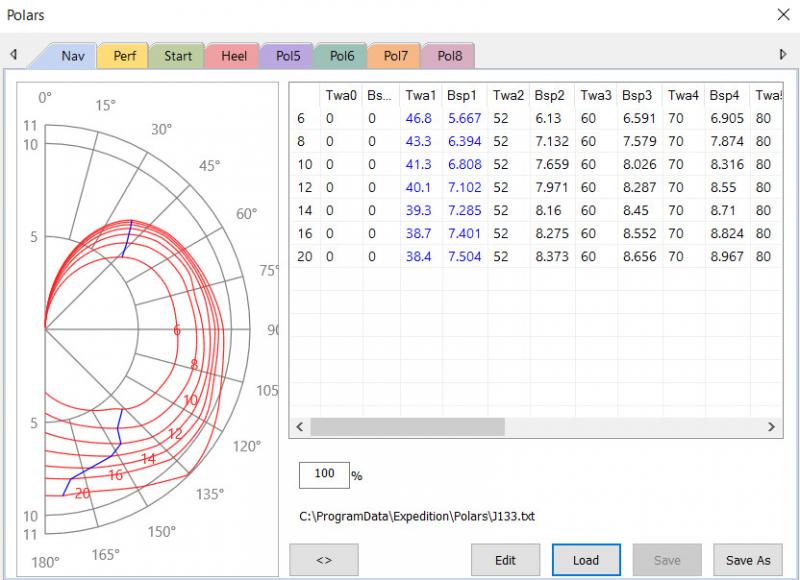
Are we fast or slow, high or low? If your only indicator is what you hear from your crew on the rail, then you will benefit from Expedition.
The Expedition polar interface will give you a quantified answer to these questions. By importing a polar you can gauge your performance vs your designer's polar or your past empirical data:
* Boat Speed vs Target Boat Speed (for best VMG upwind or downwind)
* Boat Speed vs Polar Boat Speed (straight line performance, generally reaching)
* True Wind Angle vs Target True Wind Angle (VMG sailing)
* Heel vs Target or Polar Heel
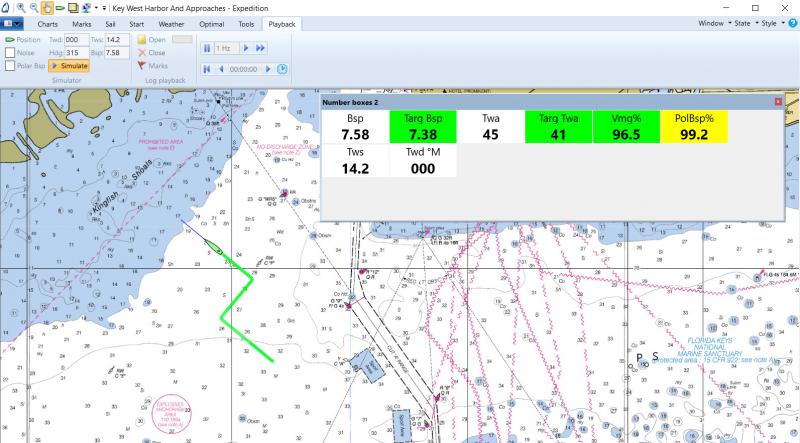
ABOVE - UPWIND EXAMPLE:
"We're going too fast!"
In the example above we see the yacht sailing at 7.58kn and 45* True Wind Angle. While the boatspeed is very close to the polar prediction (99.2%), the VMG upwind is poor (96.5%).
If the conditions allow, the yacht should be sailed closer to the Target True Wind Angle of 41* for a better VMG. It will be worth the .2kn loss of boat speed to sail closer to the wind.
If the yacht carries on for an hour at this 'low' angle, the net loss upwind would be over 2 minutes, roughly 20 seconds/mile!
You'd take up golf if your local rating authority hit you with that penalty, but many sailors unknowingly give this much time away every race by....going too fast. Fortunately, Expedition can help!
BELOW - DOWNWIND EXAMPLE:
The same math holds true downwind, and the problem is often exacerbated by the fact that the helmsman has a greater choice of True Wind Angles that can 'feel' right downwind than he has upwind.
Here the yacht is sailing slightly lower and slower than the Targets, but the VMG is good at 99.8%. It might be somewhat of a 'mushy' feel on the helm.
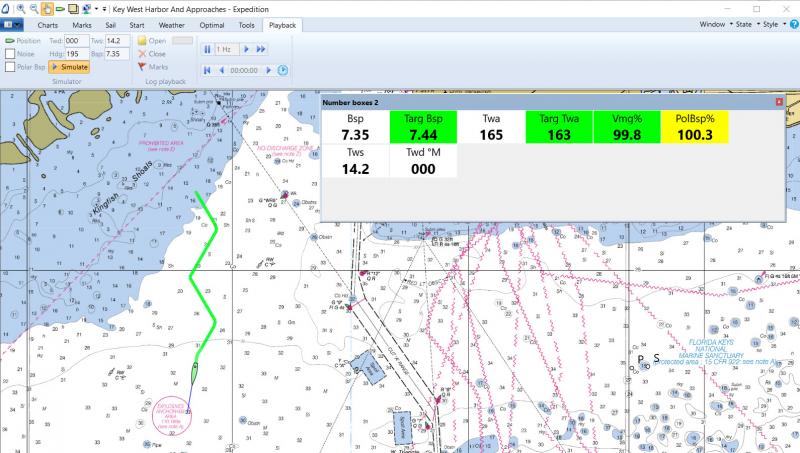
BELOW - DOWNWIND EXAMPLE 2:
If the helmsman heads up to increase speed ("Feels great!"), the VMG drops by a full percent to 98.6%. Better learn to hit that 2-Iron....
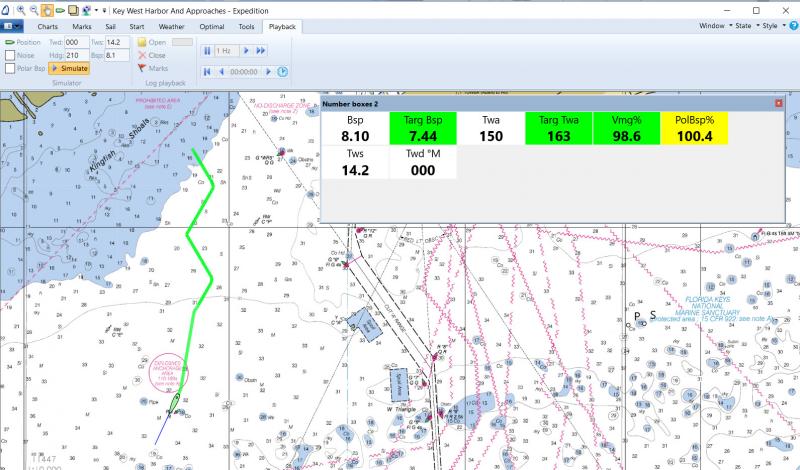
BELOW - REACHING EXAMPLE
On a reach the yacht is not making VMG upwind or downwind, so faster is always better. In this case we view Polar Boatspeed% to gauge if changes in trim, helmsman, or sailplan are making the boat faster or slower.
For instance, the example below would be great conditions for testing the effects of a spinnaker staysail. A 5 minute sample in stable conditions with and without the staysail should give a clear answer. The next step is to then adjust the Sail Chart.
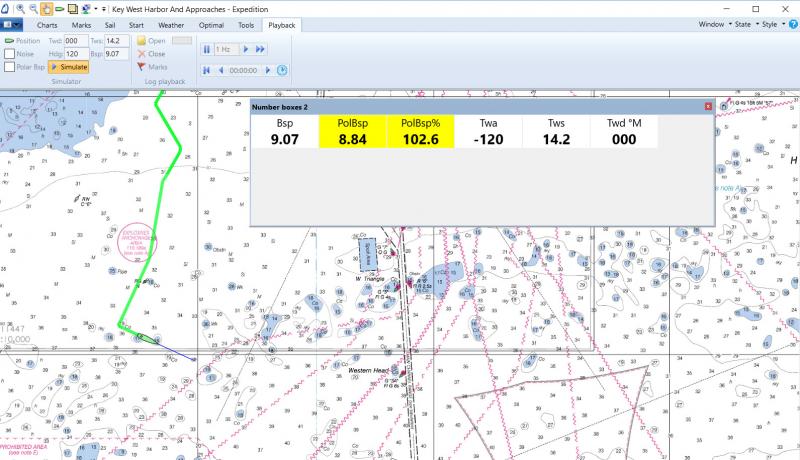
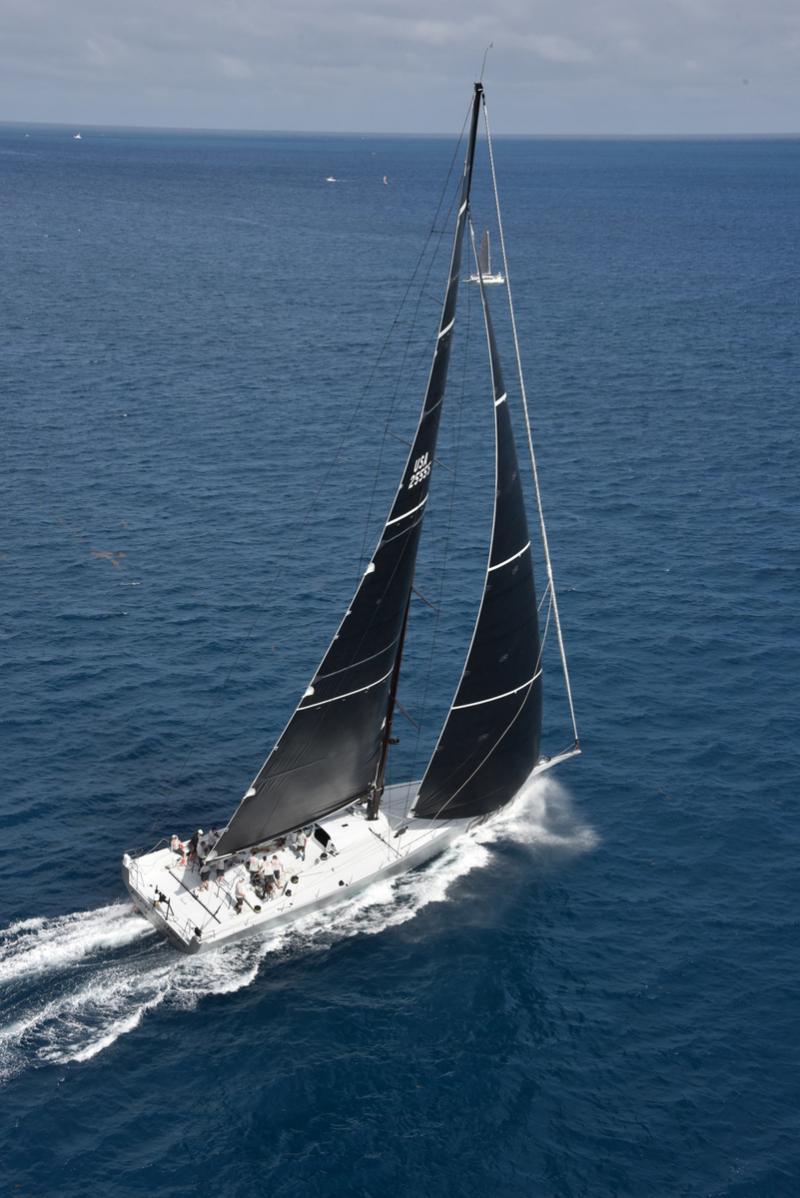
Copyright 2012 Interstate Sailing. All rights reserved.
Interstate Sailing Incorporated
